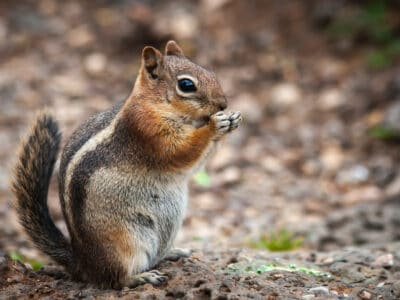Treecreeper
.jumbotron {
background-image: url(“https://a-z-animals.com/media/2022/03/shutterstock_1212800593-400×300.jpg”);
}
}
@media only screen and (min-width: 641px) and (max-width: 920px) {
.jumbotron {
background-image: url(“https://a-z-animals.com/media/2022/03/shutterstock_1212800593-470×370.jpg”);
}
}
@media only screen and (min-width: 921px) {
.jumbotron {
background-image: url(“https://a-z-animals.com/media/2022/03/shutterstock_1212800593.jpg”);
}
}
Treecreeper
Certhia familiarus
Their tailfeathers help them maintain their balance on a tree trunk
Treecreeper Scientific Classification
- Kingdom
- Animalia
- Phylum
- Chordata
- Class
- Aves
- Order
- Passeriformes
- Family
- Certhiidae
- Genus
- Certhia
- Scientific Name
- Certhia familiarus
Read our Complete Guide to Classification of Animals.
Treecreeper Conservation Status
Treecreeper Facts
- Prey
- Insects, seeds
- Fun Fact
- Their tailfeathers help them maintain their balance on a tree trunk
- Estimated Population Size
- 40,000,000-79,999,999
- Biggest Threat
- Habitat loss
- Most Distinctive Feature
- Long, curved beak
- Other Name(s)
- Common treecreeper
- Wingspan
- 7-8 inches
- Incubation Period
- 13-17 days
- Habitat
- Woodlands
- Predators
- Woodpeckers, hawks, pine martens
- Diet
- Omnivore
- Average Litter Size
- 5-6 eggs
- Type
- Bird
- Common Name
- Treecreeper
- Number Of Species
- 12
- Location
- Europe, Asia, Australia
- Nesting Location
- Behind tree bark
- Age of Molting
- One year
- Migratory
- 1
This post may contain affiliate links to our partners like Chewy, Amazon, and others. Purchasing through these helps us further the A-Z Animals mission to educate about the world’s species..

Spiders that fly! Fish that walk! And 1000+ more incredible animals. Discover them all for FREE
.photo-gallery {
–margin: 0px auto 0px;
–padding: 0px 0px 0px 0px;
}
.gallery-link {
background-image: url(“https://a-z-animals.com/media/2022/03/shutterstock_1863775240-1-1024×614.jpg”);
background-repeat: no-repeat;
background-size: cover;
background-position: center;
height: 500px;
justify-content: center;
text-align: center;
align-items: center;
display: flex;
border: 2px solid #000;
}
.gallery-link img {
height: 50%;
}
@media only screen and (max-width: 768px) {
.gallery-link {
height: 300px !important;
}
}
View all of the Treecreeper images!
“Treecreepers move in a spiraling motion around a tree trunk”
The treecreeper is notable for its climbing abilities. It’s found in Europe and Asia. This bird is an omnivore that eats seeds and insects. Its long, curved feet are designed to help it hang on to a tree trunk. A treecreeper builds its nest in a crevice behind the bark of a tree.
3 Treecreeper Amazing Facts
• The call of this bird is so high-pitched many people aren’t able to hear it
• It establishes and remains in a very small territory
• This bird always starts at the bottom of a tree trunk and makes its way upward
button.pulse {
transform: scale(1); animation: pulse 2s infinite;
box-shadow: 0 0 0 0 rgba(11, 247, 25, 1);
}
@keyframes pulse {
0% { transform: scale(0.90); box-shadow: 0 0 0 0 rgba(11, 247, 25, 0.5); }
60% { transform: scale(1); box-shadow: 0 0 0 15px rgba(11, 247, 25, 0); }
100% { transform: scale(0.90); box-shadow: 0 0 0 0 rgba(11, 247, 25, 0); }
}
Where to Find a Treecreeper
The treecreeper is found in Europe and Asia. They are in China and Mongolia with a territory extending west through Turkmenistan. In Europe, they are found in Spain, France, Italy as well as in Ireland and Great Britain. Another species called the brown treecreeper is found in Australia.
These birds live in a forest habitat in a temperate climate. They’re partial to conifers and broadleaf trees.
Treecreepers are active during all seasons. Bird watchers in Ireland, Spain, Italy, and elsewhere in their territory are likely to see these birds inhabiting the same trees.
Short-toed treecreepers, Eurasians, and others make their way around a tree trunk from the bottom to the top, in a spiraling motion. When they want to move on to another tree, they fly down to its base and begin moving upward.
Treecreeper Nests
A treecreeper makes its nest in a cavity behind a loose piece of bark. A male and female stuff pieces of grass, moss, and pine needles into the space for their nest.
Sometimes treecreepers make a nest in a box put out by a person. A nesting box for a treecreeper is mounted halfway up a tree and has a side entrance against the tree’s trunk. This nesting box helps it to stay safe from predators.
Eurasian treecreepers lay their eggs between March and July. So, there’s a lot of activity happening in the spring and early summer!
Treecreeper Scientific Name
The Eurasian treecreeper is also called the common treecreeper or even a tree mouse. This bird earned the name tree mouse from its climbing abilities. Its scientific name is Certhia familiarus. The Latin word Certhia means creeper and the word familiarus means familiar. It is in the Certhiidae family and the Aves class.
Examples of subspecies include:
• Certhia familiarus macrodactyla
• Certhia familiarus corsa
• Certhia familiarus japonica
Treecreeper Appearance & Behavior
The treecreeper has dark brown feathers on its wings, head, back, and tail. The brown is mottled with tan, black, and white. Its belly and neck are covered in white feathers. Plus, there’s a white stripe of feathers above each eye.
This bird has a long, thin beak that curves near the tip. It uses this to dig insects out of tree bark. It has two pink legs with long feet and nails. The treecreeper needs these long feet and nails to hold onto the bark as it moves around a tree. It uses its long, stiff tail feathers to keep it firmly braced against a tree trunk.
Most types of treecreepers look very similar though the treecreepers living in Ireland have darker brown feathers. Alternatively, treecreepers living in Australia have a covering of light brown feathers with a mottled pattern on their belly.
The wingspan of the treecreeper is seven to eight inches, and it has a body four to five inches long. This is a tiny bird weighing from .2 to .38 ounces.
The dark feathers of this bird are useful for helping it to camouflage as it freezes in place against a tree when predators are nearby.
Treecreeper Migration Pattern and Timing
When it comes to treecreepers and migration, some do, and some don’t. Eurasian treecreepers living in the western and southern parts of their territory where the temperatures are warmer don’t migrate. However, treecreepers living further north as well as in the mountains move a short distance south in search of warmer temperatures in the winter.
Treecreeper Diet
Short-toed treecreepers and the brown treecreeper from Australia along with other types of treecreepers have an omnivorous diet. They spend most of their day searching tree bark for sustenance.
What does a treecreeper eat?
Treecreepers eat earwigs, spiders, beetles, and ants. They also eat seeds.
Treecreeper Predators, Threats, and Conservation Status
Look at this tiny bird and it’s not surprising to learn it has several predators to look out for.
According to the IUCN Redlist of endangered species, the treecreeper is listed as least concern.
What eats treecreepers?
Small mammals such as badgers, ferrets, cats, and pine martens are its predators. They are also eaten by owls and hawks.
Woodpeckers sometimes steal eggs out of the nests of treecreepers.
All of these predators live in or around the same habitat as treecreepers.
Treecreepers are losing some of their habitats because of deforestation of the older trees they live in. But, despite some loss of their habitat, Eurasian treecreepers are listed as Least Concern with a stable population.
The short-toed treecreeper that also makes its home in Europe is listed as Least Concern but with an increasing population. Though it has experienced the loss of its forest habitat, the establishment of protected areas of land has increased its numbers.
Treecreeper Reproduction, Young and Molting
The month of March is the beginning of the treecreeper’s breeding season, and it goes into July. Both the male and female build a nest of grass, twigs, feathers, moss, and even spider webs behind a loose piece of bark on a tree. A female lays five to six eggs, and they hatch in 13 to 17 days.
Baby treecreepers are called chicks. They can fly at 15 days old and leave the nest. But many come back to the nest for a few days to be fed by their parents.
Treecreeper Population
The population of the Eurasian treecreeper is 40,000,000 to 79,999,999. They are of Least Concern with a decreasing population.
View all 74 animals that start with T
Treecreeper FAQs (Frequently Asked Questions)
What is a treecreeper?
A treecreeper is a tiny bird with dark brown feathers mottled with white, tan, and black. It has a white breast and belly.
Different types of treecreepers live in Europe and Asia. The brown treecreeper lives in Australia.
These are monogamous birds with a high-pitched call that’s sometimes difficult for humans to detect.
Why is it called a treecreeper?
It’s called a treecreeper due to its behavior of moving or creeping, around the trunk of a tree. They do this to search for insects to eat.
Does a treecreeper migrate?
While most treecreepers don’t migrate, there are some living in northern territories and in the mountains that move a short distance south in search of warmth in the wintertime.
How many eggs does a treecreeper lay?
They lay 5 to 6 eggs.
How fast does a treecreeper fly?
They fly around 20mph.
What is a treecreeper’s wingspan?
This bird’s wingspan is seven to eight inches.
When do treecreepers leave the nest?
They leave the nest at 15 days old.
How rare is a treecreeper?
Eurasian treecreepers are also known as common treecreepers because they are commonly seen in Great Britain and elsewhere in Europe.
Is a treecreeper a nuthatch?
No, they are two different birds.
What is the difference between a nuthatch and a treecreeper?
One of the biggest differences between them is nuthatches are seen going up and down tree trunks while treecreepers only progress in an upward motion. In addition, nuthatches tend to eat a lot of seed whereas treecreepers eat more insects. Also, the call of a nuthatch has a different sound than a treecreeper’s call.
Can a treecreeper walk down a tree?
No. If you see a bird walking down a tree, it’s probably a nuthatch. Treecreepers only walk upward on tree trunks.
Sources
- , Available here: https://www.garden-birds.co.uk/birds/treecreeper.html
- , Available here: https://en.wikipedia.org/wiki/Eurasian_treecreeper
- , Available here: https://birdwatchireland.ie/birds/treecreeper/
- , Available here: https://australian.museum/learn/animals/birds/brown-treecreeper/
- , Available here: https://www.bto.org/sites/default/files/shared_documents/gbw/associated_files/bird-table-74-treecreeper-species-focus.pdf
- , Available here: https://www.wildlifetrusts.org/identify-birds-prey
- , Available here: https://birdfact.com/birds/short-toed-treecreeper
















